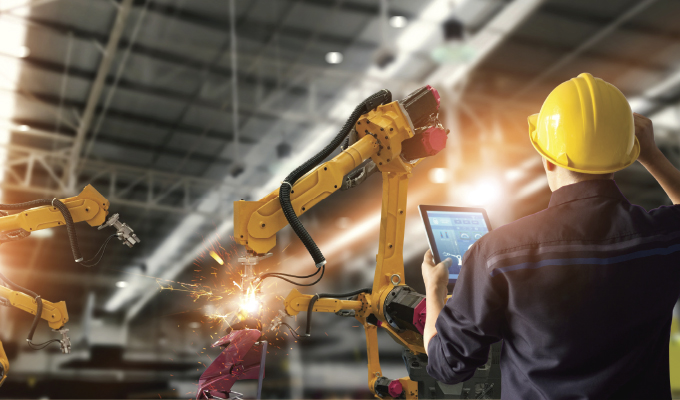If you’ve been operating a construction firm of any size over the past decade, it’s a safe bet that the single biggest problem you’ve faced is finding skilled labor.
We can theorize around the recruiting strategies, educational tactics, even deflationary economic scenarios that might allure a new wave of Americans to enlist in our skilled trades, but unfortunately, theories won’t complete projects in the near term.
Worse yet, as a high concentration of the current generation of skilled labor is set to retire over the coming decade, it is hard to fathom the forthcoming, piercing strain on our industry.
So, if enough human labor won’t support current demand for labor, we must ask: how on earth will we complete critically important buildings and infrastructure projects and sustain economic growth?
The obvious answer is: robotics.
SAVE THE TRADES
If you’ve felt the pain of the skilled labor shortage, then you also understand the hype around robotics in construction.
The thesis is simple: robots assisted by low-skilled human operators can bridge the productivity gap by completing the most tedious of construction tasks many multiples faster, at a significant cost reduction, with better accuracy, and reduced safety risks.
That’s a massive promise that, admittedly, has yet to be realized due to the nascent nature of construction robotics.
As a former construction manager (who felt the labor pain firsthand) and now a venture capitalist focused on funding the most transformative ideas in construction through Shadow Ventures, robotics has been on my radar for a while and the vertical has followed a particularly slow adoption curve. But for good reason. Buildings and infrastructure have outsized costs and serious risk attached, so making robotics work with near perfect quality, at the size and scale our market demands, is extremely time—and capital— intensive.
But there’s reason for renewed optimism: real-world use cases are increasingly both economical and scalable.
To offer some concrete examples of robotics concepts that are actively being deployed by AEC firms:
- The SAM the bricklaying robot by Construction Robotics can lay 3,000 bricks per day.
- Finishing work robots can paint, drywall, or plaster entire commercial spaces.
- Other specialty robots can frame, design layouts, weld, floor, drill, fasten, manufacture rebar, and cut.
- Exoskeleton suits can augment human strength and load bearing abilities.
- Robots in the form of 3D printers can print entire structures with concrete.
- This is just the beginning. Soon, you will find robots that augment work for each trade. The more tedious and specialized the task, the better.
While this reality can engender reactions of fear and defensiveness when you consider potential job loss for partner companies, it’s important to be mindful of the larger perspective. For the foreseeable future, we are merely trying to bridge the existing labor gap, to make sure supply meets demand, and there is still a massive hole to fill.
Moreover, robots don’t act independently. They need human operators that understand the objective of the desired task, who can supervise and sometimes course correct. The old argument of human augmentation vs. elimination applies here.
EARLY ADOPTER OF ROBOTICS
If you’re interested in becoming an early adopter of robotics to fill your skilled labor gap, there is a lot to consider before getting started.
The most important question to understand is your company’s appetite for risk. Being an early R&D partner means lower speeds, growing pains, zero scale, and generally, lower overall outputs than human labor can perform. But it also means you’re signing up to have early access into the most promising companies in the world that when mature, can exponentially outperform existing outputs. As they grow, your competitors might not have access and the cost advantages that you will.
An alternative approach would be getting started with a more mature product that matches or exceeds your output goals today.
When considering piloting a robotics company, here are a few specifics to ask about and consider:
- Production Speed (and Accuracy): How quickly can the robot complete tasks? What level of accuracy can they deliver?
- Autonomy: Is the robot fully autonomous or does it require humans in the middle to support it? (Both will require a human operator, but less autonomy means more skilled labor, time, and potentially cost—it’s just a less skilled machine.)
- Skill of Operator: What skill level does the human operator need to have in order to operate the robot?
- Scale: How quickly can the robotics company scale with your demand? Currently, this is the largest constraint to solve in the construction industry.
- Model: How will the company charge you for their robotic services? Robotics as a service, leasing, or fixed production costs are common ways robotics companies charge.
Regarding startup companies, focus on what is realistic today versus in the future.
CLOSING THOUGHT
Don’t let the hype cycle around robotics being a novel, toylike concept distract you from its most practical use case: helping solve our massive labor gap.
If you agree that there are limited ways to solve the current labor shortage, then I ask you to consider: what is the opportunity cost of not experimenting and learning how robotics could work for you, right now?
About the Author:
Nick Durham is a general partner at Shadow Ventures. Nick is a former construction manager, turned startup operator, turned VC—holding a decade of experience in leadership positions at notable startups in the built environment and real estate industries such as: BuiltWorlds, PrintWithMe, and Stuccco. At Shadow Ventures, he’s a part of a team that’s deployed $20M into early-stage startups focused on digitizing, automating, and decarbonizing the built world.
Modern Contractor Solutions, July 2023
Did you enjoy this article?
Subscribe to the FREE Digital Edition of Modern Contractor Solutions magazine.



